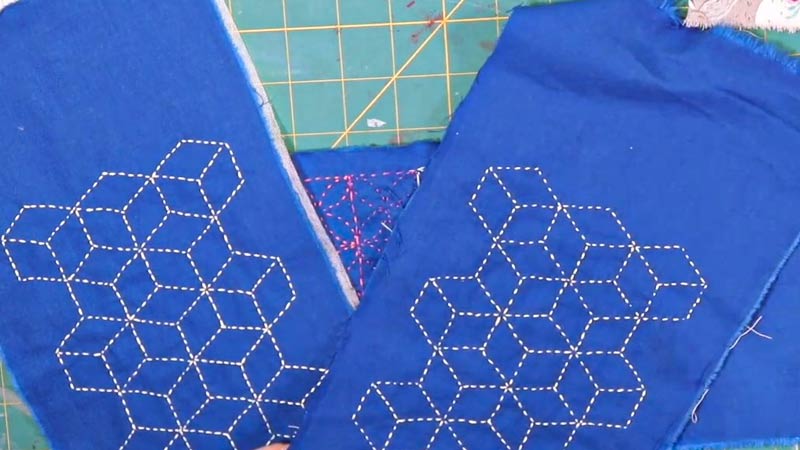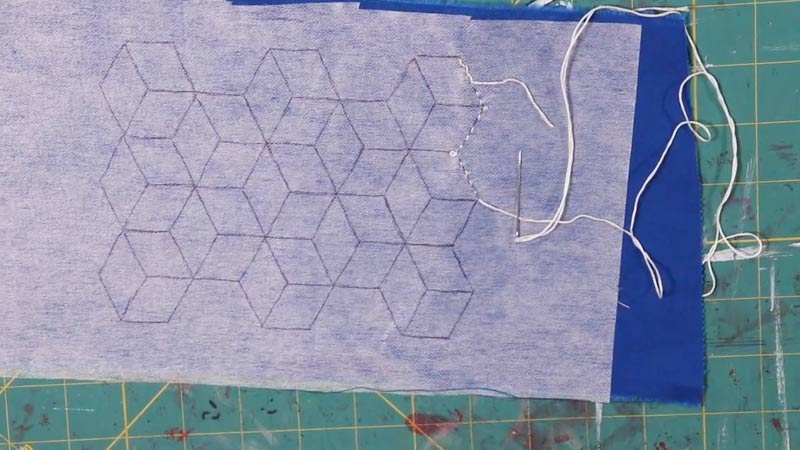Sashiko, a revered Japanese embroidery technique, carries an air of exclusivity and craftsmanship that sets it apart in the textile art world.
The question of its seemingly higher price tag often arises, prompting a closer look at the elements contributing to its expense.
This intricate hand-stitching art form boasts a rich cultural heritage, demanding time and meticulous skill. Quality materials, sourced for authenticity, play a pivotal role, while the expertise of seasoned artisans adds significant value.
Limited production runs, customization options, and a commitment to tradition further augment the cost. Understanding these factors sheds light on why Sashiko commands a premium in the market.

What Is Sashiko in Sewing?
Sashiko is a traditional Japanese sewing technique characterized by precise and intricate stitching patterns. It originated in rural Japan as a form of functional embroidery used to reinforce and repair textiles.
The word “sashiko” translates to “little stabs” or “little pierce,” reflecting the small, even stitches that define this craft. White cotton thread is typically used on an indigo-dyed fabric, creating a striking contrast.
Sashiko’s geometric designs often feature motifs inspired by nature or daily life. Beyond its utilitarian roots, sashiko has evolved into an art form appreciated for its aesthetic appeal.
Today, it is employed in many projects, from embellishing clothing and accessories to creating intricate quilts and home decor items.
Why Is Sashiko So Expensive? 9 Reasons
Sashiko, a traditional Japanese embroidery technique, is known for its intricate and beautiful designs. It has gained popularity worldwide for its unique aesthetic and cultural significance. However, the cost associated with sashiko can be attributed to several factors.
Here are some of the reasons why Sashiko can be expensive:
1. Skill and Expertise

Sashiko is more than just sewing; it’s an intricate art form that requires a profound understanding of stitching techniques. Artisans must master the precise placement of stitches, maintain consistent tension, and execute complex patterns flawlessly.
The time and effort invested in developing this expertise demand higher compensation for sashiko practitioners.
2. Time-Consuming Process
The painstaking nature of sashiko is one of its defining characteristics. Every stitch is made by hand, one at a time.
Larger projects, like clothing or quilts, can take weeks or months to complete. The patience and dedication required translate into a higher price for the final product.
3. Quality Materials
Traditional sashiko relies on premium materials to achieve its unique aesthetic. Indigo-dyed cotton fabric, for example, is known for its rich color and durability, while fine silk threads contribute to the intricacy of the patterns.
These high-quality materials enhance the visual appeal and longevity of sashiko pieces but also come with a higher cost in procurement and handling.
4. Limited Production
Due to the labor-intensive nature of sashiko, artisans often create a limited number of pieces. This exclusivity can drive up demand, and when combined with a limited supply, it results in higher prices. Buyers may be willing to pay a premium for a one-of-a-kind or rare sashiko item.
5. Cultural Significance

Sashiko is deeply embedded in Japanese culture and history. Its cultural importance is often passed down through generations, and supporting the continuation of this heritage is seen as a valuable contribution.
This intrinsic cultural value is reflected in the pricing, as buyers appreciate the authenticity and history that sashiko brings with it.
6. Artisanal Craftsmanship
Many sashiko pieces are crafted by highly skilled artisans who take immense pride in their work. These artisans often operate in small, specialized workshops or as independent creators.
Unlike mass-produced items, each sashiko piece receives personal attention and care, contributing to its uniqueness and higher cost.
7. Customization and Personalization
Sashiko allows for a high degree of customization to meet specific design preferences.
Whether incorporating unique motifs, colors, or sizes, such customization requires additional time and effort from the artisan. Consequently, personalized sashiko items may come with a premium price tag.
8. Heritage and Tradition
The heritage and tradition associated with sashiko contribute significantly to its price. When purchasing sashiko, buyers are not merely acquiring a textile but investing in a piece of Japan’s rich cultural history. This intangible value adds prestige and worth to each sashiko creation.
9. Artistic Value
Some sashiko pieces transcend their utilitarian function and are regarded as works of art. These may be created by renowned sashiko artists who push the boundaries of the craft or incorporate innovative designs and concepts. Similar to fine art, such pieces are prized for their artistic merit and command higher prices accordingly.
Wrap Up
The elevated cost of sashiko is the result of a harmonious blend of factors. Its intricate craftsmanship demands years of dedicated practice and skill. The time-intensive nature of each piece, coupled with premium materials, underscores its value.
Limited production, rooted in a rich cultural heritage, further amplifies its worth. Artisanal craftsmanship and the option for customization add to the expense. Each sashiko piece is not merely a creation; it embodies a legacy of tradition and artistry.
Ultimately, the price reflects the culmination of expertise, heritage, and dedication of artisans who continue to uphold this cherished Japanese craft, making sashiko a treasured and valued art form.
Leave a Reply